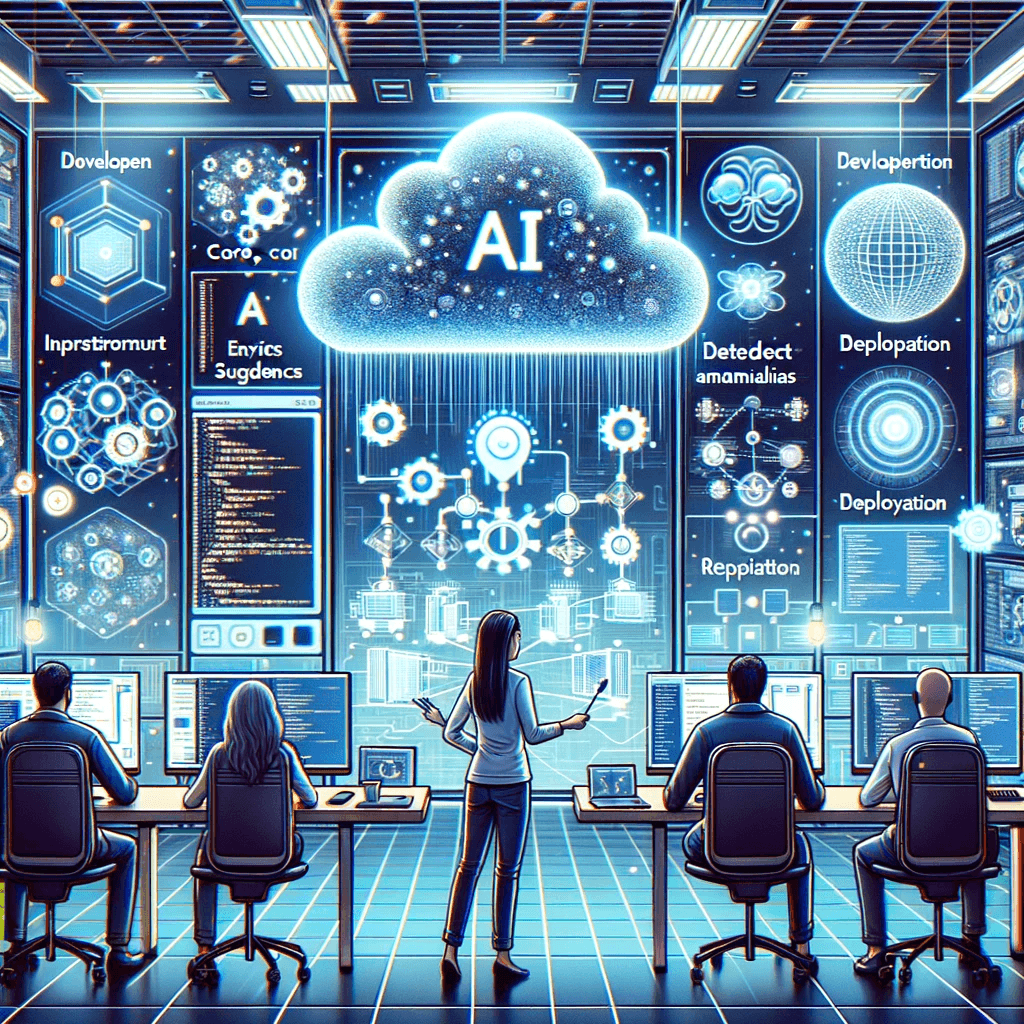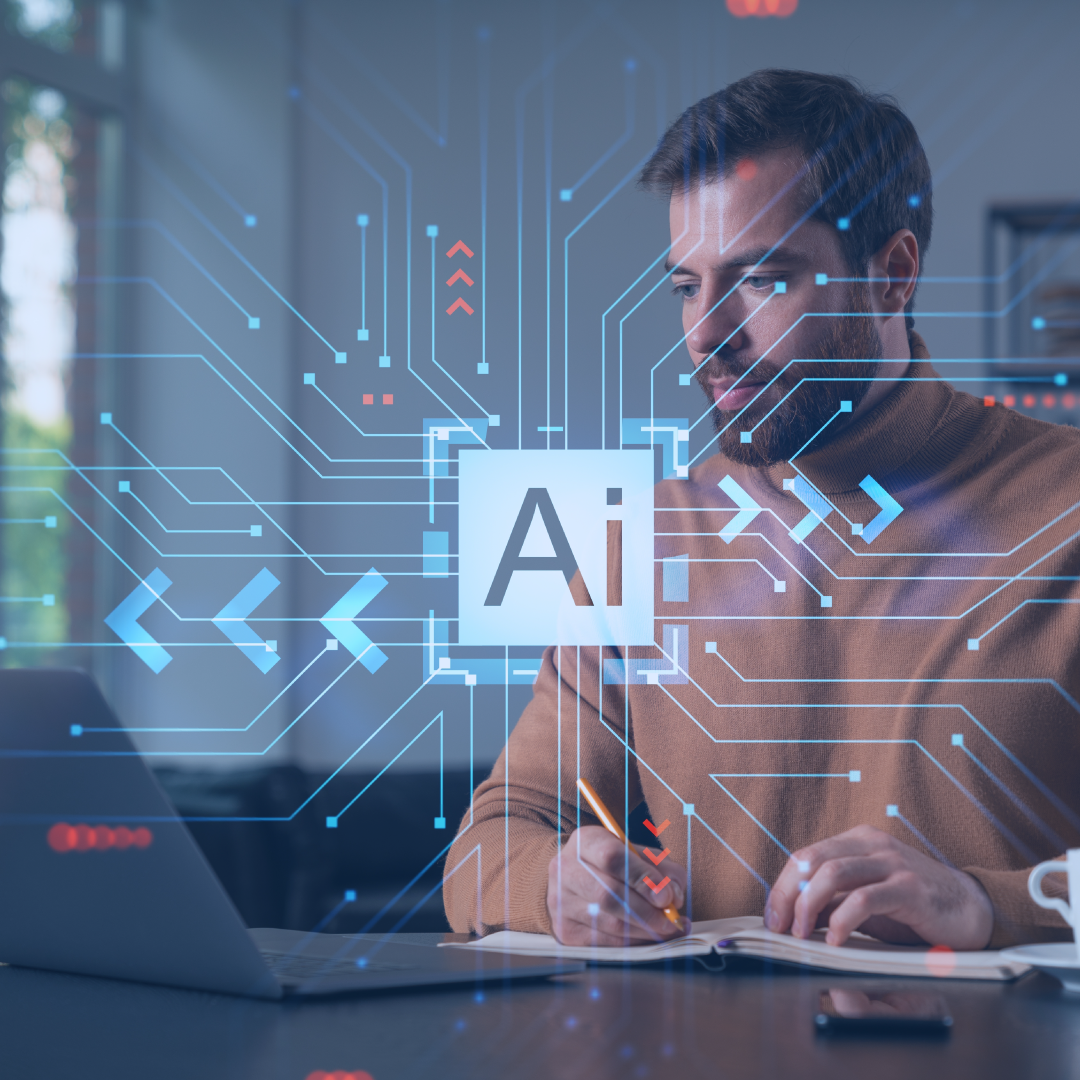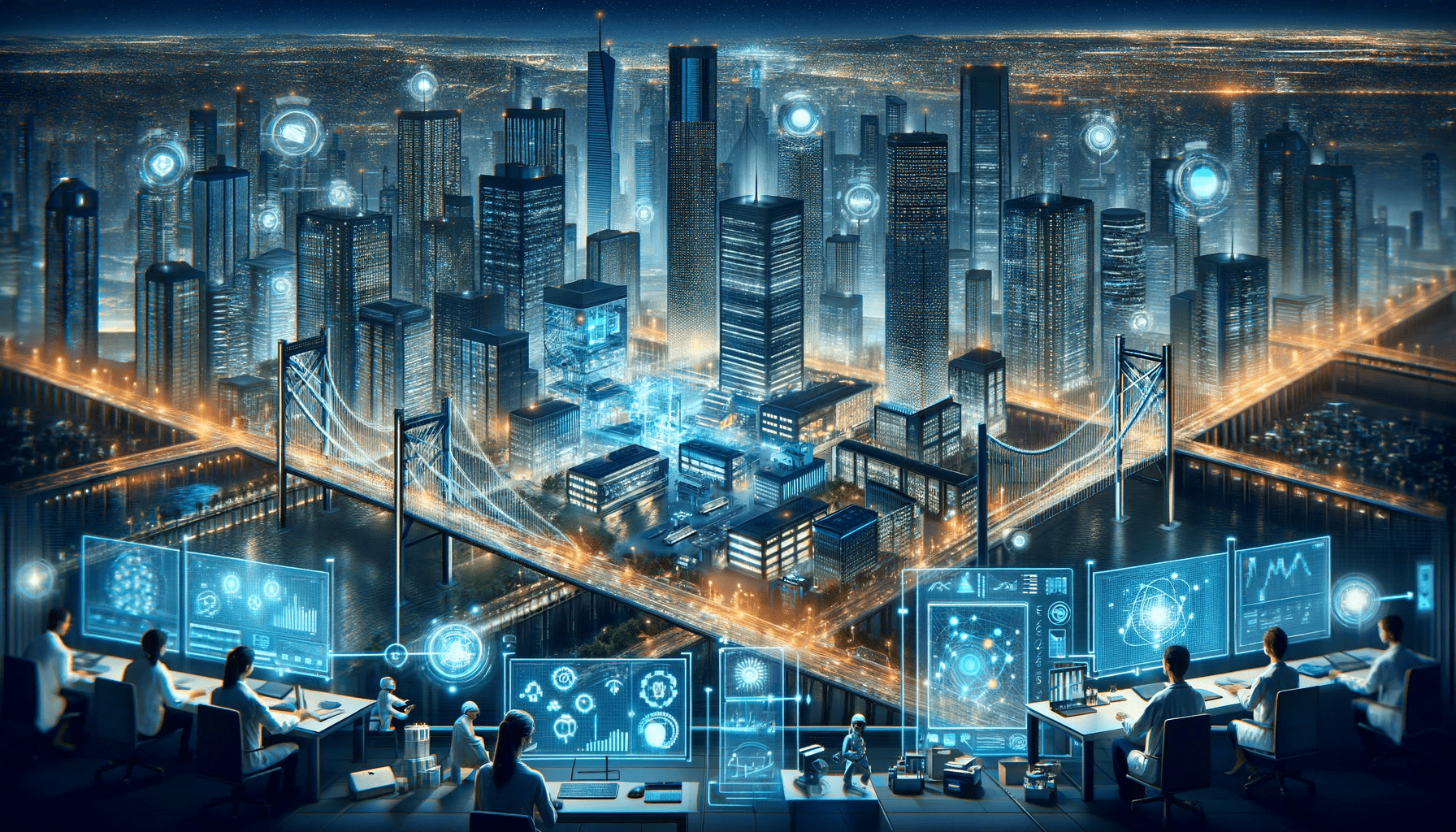AI: The Future of Dev!
THE CURRENT STATE OF DEVELOPMENT IN IT
Today it is a certainty that the Information Technology (IT) sector stands as a cornerstone of innovation and progress. Software development, a critical subset of IT, has undergone significant transformations over the years, adapting to meet the ever-changing demands of businesses and consumers alike. And yes, AI is the future of Dev!
One of the most notable shifts in software development has been the move towards Agile methodologies. Gone are the days of the Waterfall model, where each phase of a project must be completed before the next begins. In its place, Agile promotes flexibility, allowing for iterative changes and rapid deployment. This shift has not only increased efficiency but also improved the quality of the end product. Closely related to Agile is the DevOps movement, which aims to bridge the gap between development and operations teams. By fostering a culture of collaboration and automating the deployment pipeline, DevOps has significantly accelerated the software development lifecycle. The result? Faster time-to-market and more reliable software.
The adoption of cloud computing has been another game-changer, offering scalable solutions that can easily adapt to a company’s needs. Whether it’s Infrastructure as a Service (IaaS), Platform as a Service (PaaS), or Software as a Service (SaaS), cloud computing has democratized access to resources, making it easier for startups to compete with established players.
In our interconnected world, Application Programming Interfaces (APIs) have become the glue that binds different software applications together. The rise of the API economy has enabled businesses to create more versatile and integrated solutions, further driving innovation in the sector.
Of course, with great power comes great responsibility. As development practices evolve, so do the security risks. Cybersecurity has thus become a top priority, with a focus on creating robust, secure applications that can withstand the myriad of threats present in today’s digital landscape.
THE ROLE OF AI IN MODERN DEVELOPMENT
The transformative impact of AI on software development is not a fleeting phenomenon; it’s a long-term shift that is setting the stage for the future. Here’s why AI is not just an enhancement but a fundamental element in the next chapter of development.
AI algorithms are designed to learn and adapt, making them inherently scalable. As your project grows, AI can adjust to new data, requirements, and challenges, ensuring that scalability is more seamless than ever before.
The use of AI in automated testing and quality assurance means that software can be delivered with fewer errors and higher reliability. The precision that AI brings to the table is unparalleled, reducing the margin of error and enhancing the overall quality of the end product.
As we move into an era where data privacy and ethical considerations are paramount, AI can assist in ensuring that development is not just fast but also responsible. AI algorithms can be trained to identify potential ethical pitfalls, such as bias in data sets, thereby promoting more equitable outcomes.
In a market saturated with software solutions, standing out is crucial. AI provides that competitive edge, enabling features and capabilities that would be challenging, if not impossible, to achieve through traditional methods.
TRADITIONAL METHODS OF SOFTWARE DEVELOPMENT
The software development landscape has undergone a series of transformative changes over the years, each aimed at optimizing the way we create, deploy, and maintain software. This section will explore the journey from traditional methods to modern paradigms, highlighting both the advancements and the limitations we currently face.
Traditional Methods of Software Development
In the early days of software engineering, traditional methodologies like the Waterfall model dominated the scene. This linear and sequential approach required each phase—such as requirements, design, implementation, and testing—to be completed before moving on to the next. While this method offered a structured framework, it was often rigid, making it difficult to accommodate changes once the project was underway.
Key features:
- Sequential Phases
- Detailed Documentation
- Fixed Requirements
Limitations:
- Lack of Flexibility
- Time-Consuming
- High Risk of Failure for Complex Projects
The shift towards DevOps and Agile
The limitations of traditional methods led to the rise of Agile methodologies, which prioritize flexibility, collaboration, and customer feedback. Agile allows for iterative development, making it easier to adapt to changes and deliver functional software faster. DevOps emerged as a natural extension of Agile, focusing on automating the software delivery pipeline and fostering collaboration between development and operations teams.
Key features:
- Iterative Development
- Cross-Functional Teams
- Automated Deployment
Advantages:
- Faster Time-to-Market
- Improved Collaboration
- Enhanced Customer Satisfaction
Limitations of current development paradigms
While Agile and DevOps have revolutionized software development, they are not without their challenges.
Complexity:
The very flexibility that makes Agile and DevOps appealing can also introduce complexity, especially when scaling to larger projects or more diverse teams.
Skill gaps:
The need for specialized skills in areas like automation and cloud computing can create skill gaps within organizations, requiring ongoing training and potentially slowing down projects.
Security concerns:
The rapid pace of Agile and DevOps can sometimes overlook security measures, making applications vulnerable to cyber threats.

THE RISE OF AI IN DEVELOPMENT
As we navigate the complexities of the digital age, Artificial Intelligence (AI) is emerging as a transformative force in various industries, including software development. The integration of AI into the development process is not just an incremental improvement; it’s a paradigm shift that is redefining the way we approach software creation and maintenance.
Ai-driven tools in software development
The advent of AI has led to the development of a plethora of tools designed to assist, augment, and sometimes even replace human capabilities in the software development lifecycle. These AI-driven tools are becoming indispensable assets for developers, offering a range of functionalities that enhance both efficiency and effectiveness.
Code completion and review
AI-powered code completion tools, such as Kite and TabNine, leverage machine learning algorithms to predict the next line of code a developer will write. These tools analyze existing codebases to offer real-time suggestions, thereby speeding up the coding process and reducing the likelihood of errors.
Here’s a look at the top 10 tools that are making waves in 2023:
- Features: Auto code generation, context-aware suggestions, and GitHub integration.
- Best For: Open-source projects and GitHub users.
- Why It Stands Out: Copilot’s deep integration with GitHub repositories offers seamless code review and completion.
- Features: Code analysis, refactoring, and navigation enhancements.
- Best For: .NET developers.
- Why It Stands Out: ReSharper offers robust static code analysis and is highly customizable.
- Features: Interactive code mapping, real-time visualization.
- Best For: Large codebase navigation.
- Why It Stands Out: Sourcetrail provides an interactive UI that helps in understanding complex codebases.
- Features: Code review, real-time collaboration, and IDE integration.
- Best For: Remote teams.
- Why It Stands Out: CodeStream allows developers to discuss code and do peer reviews within the IDE.
- Features: Static and dynamic code analysis, security vulnerability detection.
- Best For: Enterprise-level applications.
- Why It Stands Out: SonarQube offers comprehensive code quality metrics and is highly scalable.
- Features: Code review, syntax highlighting, and extensibility.
- Best For: Small to medium-sized teams.
- Why It Stands Out: Review Board is open-source and offers a range of third-party extensions.
- Features: Code review, repository hosting, and bug tracking.
- Best For: Agile teams.
- Why It Stands Out: Phabricator offers a suite of tools including task management and version control.
- Crucible (by Atlassian)
- Features: Peer code review, inline commenting, and JIRA integration.
- Best For: Teams already using Atlassian products.
- Why It Stands Out: Crucible offers seamless integration with JIRA and other Atlassian tools.
- Features: Security vulnerability scanning, open-source license compliance.
- Best For: Security-focused development.
- Why It Stands Out: Snyk specializes in identifying security vulnerabilities in code and dependencies.
Bug detection and resolution
Traditional debugging can be a time-consuming and tedious process. AI-driven tools like DeepCode and Bugspots use machine learning to scan code for potential errors, vulnerabilities, and inefficiencies. These tools not only identify issues but also suggest optimal solutions, significantly reducing the debugging time.
Automated testing
Automated testing is another area where AI is making significant inroads. Tools like Testim and Applitools use AI to simulate a variety of user behaviors and environments, ensuring that the software is robust and performs consistently across different platforms.
DevOps automation
AI is also finding its way into DevOps, automating various stages of the development pipeline. From intelligent monitoring systems that predict system failures to automated deployment tools that optimize resource allocation, AI is making DevOps more efficient than ever.

Benefits of AI in Software Development: Efficiency, Accuracy, and Scalability
The integration of Artificial Intelligence (AI) into the software development lifecycle is revolutionizing how developers build, test, and deploy applications. Below are the key benefits that AI brings to the table:
Efficiency
- Automated Code Generation: Tools like GitHub Copilot can automatically generate code snippets, reducing the time developers spend on repetitive tasks.
- Intelligent Debugging: AI algorithms can predict where bugs might occur and offer real-time solutions, significantly reducing debugging time.
- Resource Allocation: AI can analyze project requirements and allocate resources more effectively, optimizing the development process.
- Continuous Integration and Deployment: AI-driven CI/CD pipelines can automatically test and deploy code, making the development process more agile.
- Real-time Collaboration: AI-powered platforms enable real-time collaboration among developers, even if they are geographically dispersed.
Accuracy
- Code Review: AI-powered tools like SonarQube can perform in-depth code reviews, identifying even the most subtle errors that human reviewers might miss.
- Security Audits: AI can identify security vulnerabilities in the codebase, ensuring that the application is secure from potential threats.
- Quality Assurance: AI algorithms can run exhaustive tests that are impractical for humans to execute, ensuring that the code is robust and reliable.
- Data Validation: AI can automatically validate data models and schemas, ensuring that the data flow within the application is accurate and consistent.
- Compliance Checks: AI can ensure that the code adheres to industry standards and regulations, reducing the risk of non-compliance.
Scalability
- Load Balancing: AI can predict traffic spikes and automatically allocate server resources, ensuring optimal performance.
- Auto-scaling: AI algorithms can analyze application performance metrics and automatically scale resources up or down as needed.
- Optimized Query Execution: AI can optimize database queries, ensuring that large-scale applications run smoothly.
- Microservices Management: AI can manage the orchestration of microservices in a distributed architecture, making it easier to scale applications horizontally.
- Cost Optimization: By automating resource allocation, AI can significantly reduce operational costs, making it more cost-effective to scale applications.
KEY AI TECHNOLOGIES SHAPING SOFTWARE DEVELOPMENT
The integration of AI into software development is more than just a trend; it’s a paradigm shift. Below are some of the key AI technologies that are making a significant impact:
Machine Learning Algorithms
- Predictive Analytics: Machine learning models can analyze historical data to predict future outcomes, such as user behavior or system performance, allowing for proactive adjustments.
- Anomaly Detection: Algorithms can automatically identify unusual patterns in system behavior, which can be crucial for identifying security threats or performance issues.
- Code Optimization: Machine learning can analyze codebases to suggest optimizations, making the code more efficient and less resource-intensive.
- Personalized User Experiences: ML algorithms can analyze user behavior to personalize interfaces and experiences, thereby increasing user engagement and satisfaction.
- Data Mining: Machine learning can sift through large datasets to extract valuable insights that can inform development decisions.
Natural Language Processing (NLP)
- Chatbots and Virtual Assistants: NLP enables the creation of intelligent chatbots that can handle customer service inquiries, thereby improving user experience.
- Semantic Code Search: Developers can use natural language queries to search for code snippets, making the development process faster and more intuitive.
- Automated Documentation: NLP algorithms can generate or update code documentation automatically, saving developers valuable time.
- Sentiment Analysis: NLP can analyze user reviews and feedback to gauge public sentiment, providing valuable insights into areas for improvement.
- Language Translation: Real-time translation of application content can be automated, making software more accessible to a global audience.
Automated Testing Tools
- Regression Testing: AI can automatically run regression tests whenever changes are made, ensuring that new code doesn’t break existing functionalities.
- Performance Testing: AI algorithms can simulate various stress conditions to test how the application performs under different scenarios.
- Security Testing: AI can simulate various attack vectors to identify vulnerabilities in the application.
- UI/UX Testing: Automated tools can test the user interface and experience, ensuring that the application is both functional and user-friendly.
- Code Review: AI-powered tools can perform in-depth code reviews, flagging errors, and suggesting improvements.
AI in Cloud Computing
- Resource Management: AI algorithms can optimize the allocation of cloud resources, reducing operational costs.
- Data Analytics: Cloud-based AI tools can analyze large datasets in real-time, providing actionable insights.
- Security: AI can monitor cloud environments for security threats, enabling real-time responses to any breaches.
- Serverless Computing: AI algorithms can manage serverless architectures, automatically scaling resources as needed.
- Disaster Recovery: AI can automate backup and recovery processes, minimizing downtime in case of system failures.
FUTURE PROSPECTS: FOR AI IN SOFTWARE DEVELOPMENT IN THE NEXT 5-10 YEARS
The integration of AI into software development is still in its nascent stage, and the possibilities for the future are almost limitless. Below are some predictions that could redefine the landscape of software development:
HYPER-PERSONALIZATION OF SOFTWARE
- User-Centric Development: AI will enable the creation of software that can adapt in real-time to individual user behavior, offering a hyper-personalized experience.
- Context-Aware Applications: AI algorithms will be able to understand the context in which software is being used, allowing for features and functionalities to adapt accordingly.
ADVANCED SECURITY MEASURES
- Proactive Threat Detection: AI will move from reactive to proactive security measures, identifying potential threats before they become actual vulnerabilities.
- Biometric Authentication: Advanced AI algorithms will make biometric systems more secure and reliable, becoming the standard for software authentication.
INTELLIGENT DEVELOPMENT ENVIRONMENTS
- Real-Time Collaboration: AI-powered IDEs will offer real-time collaboration features, including automated code review and bug detection, making remote work more efficient.
- Self-Correcting Code: IDEs will become so advanced that they will not only suggest corrections but also automatically refactor code to improve efficiency and readability.
DECENTRALIZED AI DEVELOPMENT
- Blockchain and AI: The integration of blockchain technology will make AI models more transparent and secure, facilitating decentralized development efforts.
- Edge AI: AI processing will move closer to the data source, i.e., on local devices, reducing latency and improving performance.
Ethical and Responsible AI
- Ethical Guidelines: As AI becomes more integrated into software development, ethical guidelines and standards will be established to ensure responsible use.
- Bias Mitigation: Advanced algorithms will be developed to identify and mitigate biases in AI models, making software more equitable.
Automation of Complex Tasks
- Full-Cycle Automation: From requirement gathering to deployment, AI will automate complex tasks across the software development lifecycle.
- Natural Language Programming: Developers will be able to write code using natural language, making software development more accessible.
Quantum Computing and AI
- Quantum Algorithms: As quantum computing becomes more practical, new algorithms will be developed that can solve complex problems more efficiently.
- Quantum Security: Quantum computing will offer new ways to secure software, making traditional encryption methods obsolete.
The next 5-10 years will be a transformative period for AI in software development. As these technologies mature, they will not only make development faster and more efficient but will also open up new avenues that we have yet to imagine.
CONCLUSION: THE FUTURE IS AI-DRIVEN
The integration of AI into software development is not a fleeting trend but a seismic shift that is set to redefine the industry. As AI technologies continue to mature, they will not only make the development process more efficient but also open up new possibilities that are currently beyond our imagination. The future of software development is undeniably AI-driven, and embracing this change is not an option but a necessity for staying competitive.
If you’re looking to future-proof your software development processes and harness the full potential of AI, now is the time to act. Contact Zeren Software to explore how we can help you integrate AI technologies into your development lifecycle, ensuring that you are at the forefront of this exciting evolution.
Don’t be left behind in the AI revolution. Reach out to Zeren Software today and take the first step towards a smarter, more efficient, and innovative future.









